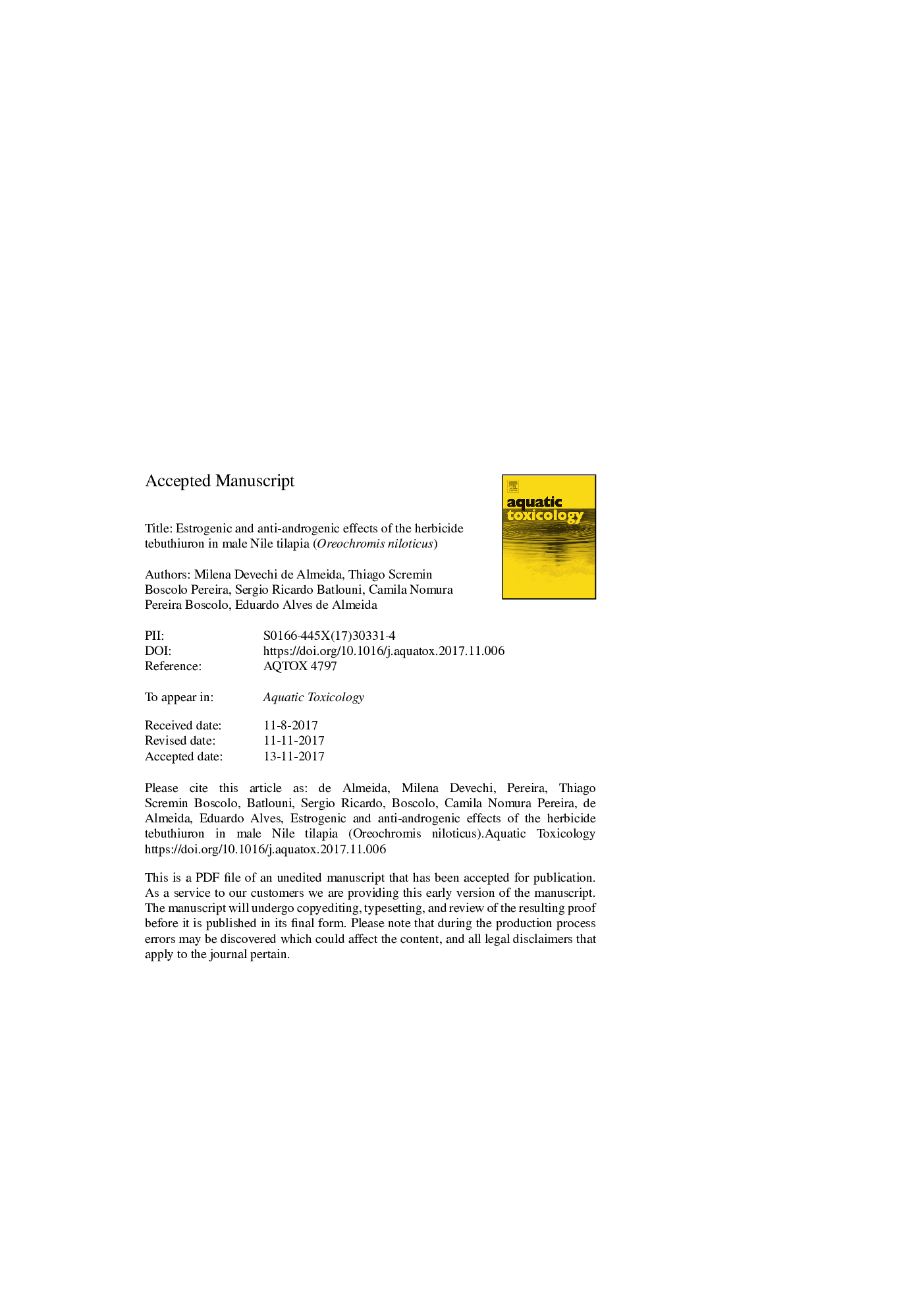| Article ID | Journal | Published Year | Pages | File Type |
|---|---|---|---|---|
| 8883888 | Aquatic Toxicology | 2018 | 33 Pages |
Abstract
Tebuthiuron is a phenylurea herbicide widely used in agriculture that can reach the aquatic environments, possibly posing negative effects to the aquatic biota. Phenylurea herbicides, such as diuron, are known to cause estrogenic and anti-androgenic effects in fish, but no such effects were yet reported for tebuthiuron exposure. Thus, the aim of this study was to evaluate if tebuthiuron, at environmentally relevant concentrations (100 and 200Â ng/L) and after 25Â days of exposure have estrogenic and/or anti-androgenic effects on male of Nile tilapia (Oreochromis niloticus), through the evaluation of plasmatic testosterone (T) and estradiol (E2) levels, brain aromatase (CYP19) levels (western-blot), and by evaluating the histology of the testicles. When compared to the control group, plasmatic T levels decreased about 76% in the animals exposed to 200Â ng/L of tebuthiuron, while E2 levels increased about 94%, which could be related to a significant increase (77%) in CYP19A1 levels, an enzyme that catalyzes the conversion of androgens into estrogens. Histological analyses of the testicles also demonstrated that tebuthiuron at both tested concentrations caused a decrease in the diameter of the seminiferous tubules and in the diameter of the lumen. Therefore, the gonadosomatic index (GSI) was reduced by 36% % in the animals exposed 200Â ng/L to tebuthiuron. Indeed, the relative frequency of spermatocytes and spermatids increased respectively 73% (200Â ng/L) and 61% (100Â ng/L) in the tebuthiuron exposed animals, possibly due to the impairment of sperm release into the lumen, that was decreased 93% (200Â ng/L) in the treated animals compared to the control. These results confirm that tebuthiuron causes estrogenic and anti-androgenic effects in Nile tilapias at environmentally relevant concentrations.
Related Topics
Life Sciences
Agricultural and Biological Sciences
Aquatic Science
Authors
Milena Devechi de Almeida, Thiago Scremin Boscolo Pereira, Sergio Ricardo Batlouni, Camila Nomura Pereira Boscolo, Eduardo Alves de Almeida,
